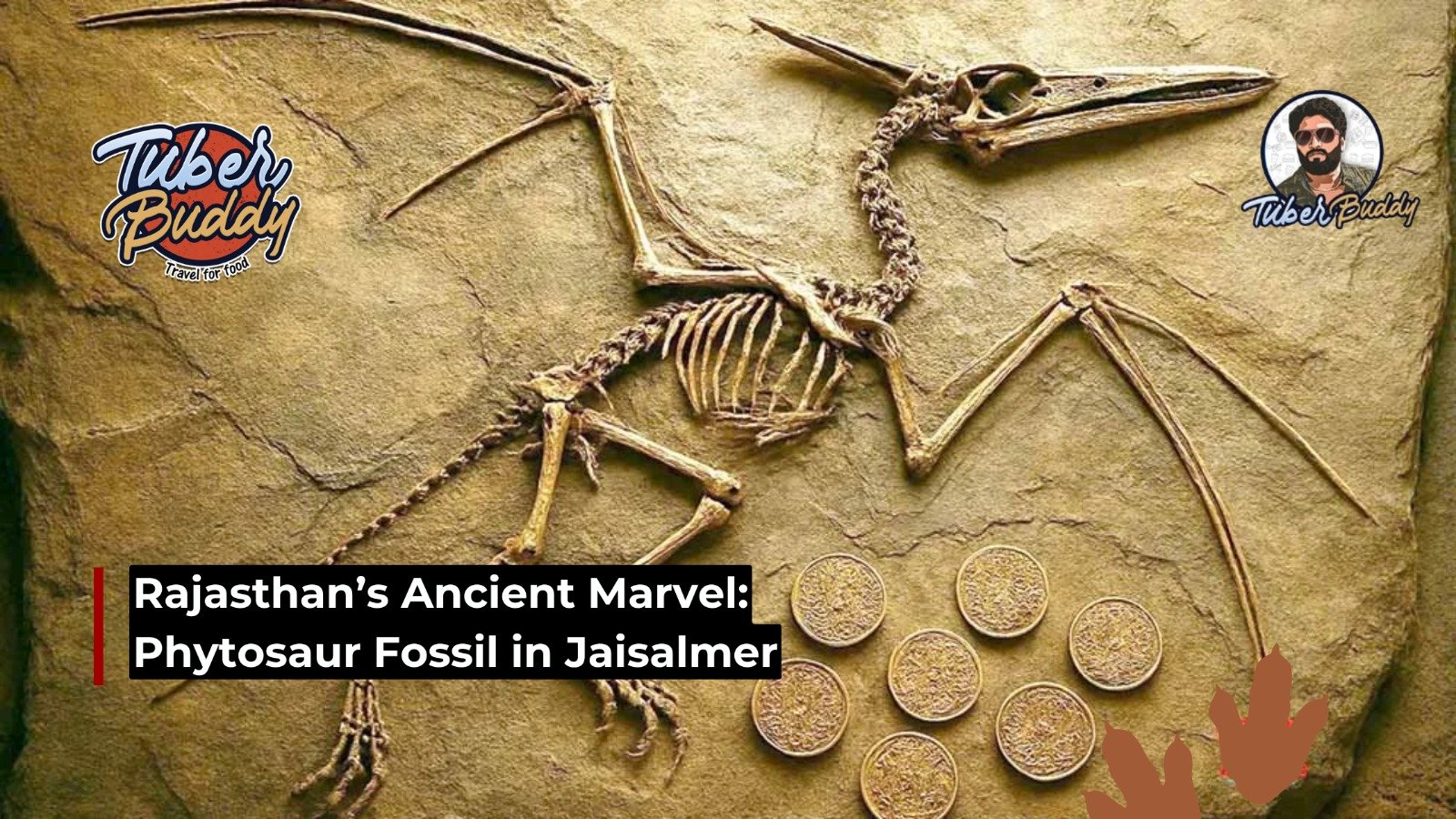Rajasthan’s Ancient Marvel: Phytosaur Fossil in Jaisalmer

When Rajasthan comes to mind, images of golden deserts, forts, and palaces fill the imagination. But though in August of 2025, the sands of Jaisalmer would reveal something more incredible — a vision of its world of 200 million years ago. Villagers discovered the first-ever Phytosaur fossil in Jaisalmer — India’s first Phytosaur fossil, complete with skeletal remains and an egg.
What Makes a Phytosaur Unique?
What makes this discovery more than just another find that it is a landmark moment. Phytosaur fossil in Jaisalmer were ancient reptiles that lived in the Late Triassic, way before crocodiles! They were crocodile-esque, but had its distinct features, including:
- They have nostrils that are near its eyes, unlike crocodiles.
- They had rugged armor-like scales and long jaws with sharp teeth at the end — ideal for hunting.
- They are semi-aquatic and live in rivers and lakes.
- They range in sizes from 6–8 meters, which makes them the apex predator.
The Jaisalmer Phytosaur fossil was discovered with much more than just remains; it offers an opportunity to think about the evolutionary story of the Earth.
Jaisalmer and the Fossil Discovery
In Megha village — Jaisalmer, while the villagers were working near a pond, they stumbled upon strange bone-like structures under ground.
After further investigation, experts determined that the artifacts belonged to a Phytosaur – around -200-210 million years old. Surprisingly, there was an egg present with the skeleton – a rare find in the fossil record.
So what? Because fossilized eggs can provide us with extremely valuable information regarding reproduction and development, and for India, it is a double treasure- finding evidence of a Phytosaur existing on Indian land, and evidence of nesting behavior.
The Point of Why Rajasthan’s Find is Historic
India is no stranger to fossils- dinosaur eggs in Gujarat, and pterosaur fossils in Jaisalmer decades ago. But this discovery is unique because:
- It is India’s first phytosaur fossil.
- It also links Rajasthan to Triassic ecosystems throughout the world.
- It shows that Rajasthan’s arid landscape was once blooming with life and water.
- It contributes to a better organized prehistoric biodiversity in the region.
- This places Rajasthan firmly on the paleontological map of the world, and opens doors for future and deeper inquiries and possible partnerships.
The Human Element
For the villagers who made the initial discovery, the fossil was not just a scientific find. Imagine being one of the first to handle something that has not seen sunlight for 20 crore years.
That sense of wonder is something anyone can identify with.
The fossil of a Phytosaur in Jaisalmer also raises other questions:
- How fragile and mutable life on Earth is.
- How much remain buried underground.
- How discoveries like this can inspire our children, researchers and local communities.
Looking to the Future
This fossil could change the way people think about Rajasthan — not only as a land of kings and deserts, but as a place where huge reptiles lived. With significant preservation, Jaisalmer could become a center for fossil tourism around the world, where people come for the holiday to learn about creatures that lived millions of years before humans.
Conclusion
It isn’t just science, this is a way to tell stories stretched through time. The kids who hear about the Phytosaur fossil in Jaisalmer today, may one day wake up and imagine themselves as paleontologists. The local communities might start to imagine new business models in heritage tourism. And again India shows that the soil can tell us stories older than history itself.
There is a history hidden in every grain of desert sand in Rajasthan. This time it told us about a reptile swimming through rivers 200 Million years ago, waiting patiently for us to come to it.
For more stories that connect past and present, Follow TuberBuddy.
